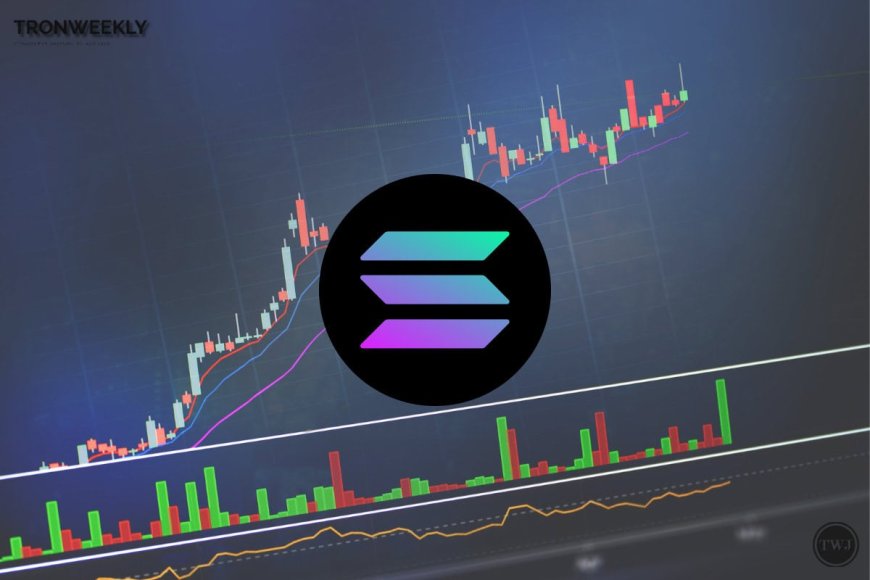Solana Community Debates Significant Cut to SOL Inflation
Solana Community Debates Significant Cut to SOL Inflation

Solana validators are casting votes on a significant reduction in SOL staking rewards.
Solana's key stakeholders are discussing a potential economic shift aimed at enhancing SOL's investment appeal, though critics caution that it might disadvantage smaller validators who help maintain the network’s decentralization.
Much like real-world economic debates, this discussion revolves around inflation. While some level of inflation is unavoidable, it is also an intentional feature of proof-of-stake blockchains like Solana. The network mints new tokens to compensate validators for their role in securing the system, incentivizing them to perform the costly computational tasks required to keep it running.
However, Solana's key stakeholders largely agree that the network is issuing new SOL at an excessive rate. To address this, a proposal known as SIMD-0228, co-authored by a partner at the influential venture firm Multicoin Capital, suggests a market-driven approach that would reduce inflation from 4.7% to approximately 1.5%, assuming current staking rates remain steady.
Implementing this change would prevent billions of dollars' worth of new SOL from entering circulation annually. This could potentially support SOL’s price, as validators and stakers would be earning—and selling—fewer newly minted tokens.
Tushar Jain, co-author of the proposal and a partner at Multicoin Capital, has argued that the move would make Solana more appealing to Wall Street. In a February call, he stated that it removes the "enormous opportunity cost" of investing in a Solana ETF, a hypothetical product that would likely lack access to staking rewards.
The proposal has gained backing from high-profile figures in the Solana ecosystem, including co-founder Anatoly Yakovenko, Helius CEO Mert Mumtaz, and influential validators, particularly larger ones. They view it as a necessary step in Solana’s evolution.
However, critics warn that reducing inflation could hurt smaller validators, who already operate on thin margins. Even some supporters of SIMD-0228 acknowledge that it could force over 100 of Solana’s 1,300 validators out of business.
"I feel that most small/medium-sized validators are against it," said Jota, who runs Pine Stake, a smaller validator. He estimated that the change could wipe out over 25% of profitable validators.
Adding to these concerns is another proposal, SIMD-123, which, while unrelated, is expected to further strain small validators by altering the distribution of staking rewards.
A significant drop in validator numbers could leave Solana vulnerable to centralization concerns, warned David Girder, head of liquid investments at Finality Capital Partners. He estimated that the inflation changes alone could eliminate up to 250 validators and, in a worst-case scenario, reduce the total validator count by a third during a bear market.
Monetary Policy Changes
Solana’s supporters view inflation as a mechanism to fund network security. Validators secure the network by accruing staked SOL from token holders seeking yield rewards. The more SOL a validator stakes, the greater their rewards, but they must remain honest and active to continue earning—otherwise, they risk losing their stake.
Currently, Solana distributes staking rewards at a 4.7% annual rate, which is set to decrease by 15% each year until it eventually stabilizes at 1.5%. This predictable schedule provides validators with a clear economic framework for planning.
SIMD-0228 proposes replacing this fixed model with a more dynamic system, described as a "smarter curve" by longtime validator operator Brian Long. Instead of a predetermined rate, the proposal would use the percentage of SOL being staked as a key metric to determine how many new tokens the network should mint in each epoch.
Under this smart emissions model:
- If fewer tokens are staked, staking yields would increase to attract more stakers and bolster network security.
- If a large proportion of SOL is already staked, staking yields would decrease in response to lower demand.
This market-driven approach aims to optimize security costs by adjusting staking incentives based on real-time network conditions.
Decentralized Economics
For most Solana validators, staking rewards are just one part of their revenue mix. Validators also earn SOL through various fees and Jito tips—additional income sources that fluctuate based on network activity.
During bull markets, when network usage surges, these revenue streams increase, as more users are willing to pay higher fees to transact on Solana. Conversely, during slower periods, when transaction volume drops, these revenues shrink, making staking rewards an even more crucial part of validator income.
While critics like David Girder and Jota predict that SIMD-0228 could force hundreds of small validators out of business, others downplay the potential damage, estimating that only 20-30 validators—instead of 200-300—might shut down.
"The belief is that more validators mean greater security for the network," explained LakeStake, a validator, in a recent SIMD-0228 explainer video. However, opponents argue that there's not enough data to justify the risk of losing validators.
In response to these concerns, skeptics have successfully pushed for revisions to SIMD-0228. One major change is a months-long delay in implementation after approval, allowing time to reform Solana’s expensive vote fees—a significant operating cost for validators.
Still, preparation can only soften the potential downside. If a deep bear market dries up economic incentives (staking rewards, tips, and fees), smaller validators would be most at risk of shutting down.
There’s also disagreement over how much decentralization would actually suffer if small validators were forced out.
Many smaller validators already rely on heavy subsidization from the Solana Foundation, noted Laine, operator of the well-known Stakewiz validator and a strong supporter of SIMD-0228.
"Losing 200 validators who depend entirely on a single staker (Solana Foundation) has no meaningful impact on decentralization, in my opinion," Laine wrote on X.
With heated debates over the proposal’s impact, some question why there's such a rush to implement SIMD-0228.
In response, co-author Tushar Jain has warned against "analysis paralysis", arguing that excessive delays could turn Solana into a slow-moving, overly bureaucratic network—drawing a direct comparison to Ethereum.
"Organizations often develop a status quo bias as they grow," Jain explained. "Why do we do it this way? Because we've always done it this way. And I think that is the death knell of any organization."
His argument suggests that Solana must remain agile and willing to evolve if it wants to maintain its competitive edge in the blockchain space.
What's Your Reaction?
 Like
0
Like
0
 Dislike
0
Dislike
0
 Love
0
Love
0
 Funny
0
Funny
0
 Angry
0
Angry
0
 Sad
0
Sad
0
 Wow
0
Wow
0






























































